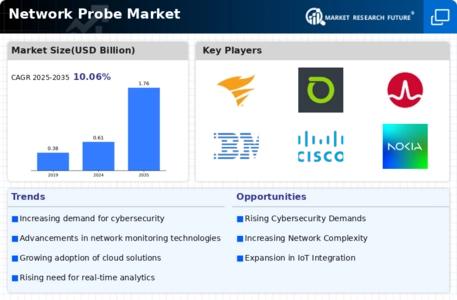Market Trends
Key Emerging Trends in the Network Probe Market
The growing network probe industry shows how much network administration and monitoring may vary. Network tracking systems need network probes to gather and analyze network data. They can maximise network speed, security, and dependability this way. Many market developments affect network probe hardware. These trends show how the business is responding to more complex networks and proactive monitoring. The need for increasingly robust network probes that offer insight into network operations has grown. Organizations are working harder to understand their network data as networks get more complicated. Many people want network tools with real-time data, DPI, and application access. Due to these traits, IT experts can discover and fix speed and security concerns and guarantee their networks run properly. AI and ML have also been used more to construct intelligent network technologies that monitor networks. These solutions use artificial intelligence and machine learning to analyze networks, detect anomalous activity, and predict performance concerns before they occur. Artificial intelligence and machine learning reduce false positives, simplify complicated tasks, and improve network infrastructure efficiency. The Network Probe market shows another noteworthy trend: security is getting more attention. Due to the increase of online threats and attacks, enterprises are prioritizing systems that monitor performance and provide effective protection. Modern network probes can identify and stop attacks, combine threat data, and analyze traffic on protected networks. These extra features allow businesses to protect their networks from online attacks and protect their data. The network probe industry is also changing to accommodate cloud-based and heterogeneous network architectures. As more enterprises move their apps and services to the cloud, they need network solutions that can monitor data on-premises and in the cloud. Cloud-compatible technologies make viewing heterogeneous systems easier. This lets IT teams manage and analyze performance across several network designs. Recent Network Probe industry trends have prioritized integration and interoperability. Businesses want tools that operate with their network systems and other companies' products. Increasing numbers of applications employ open APIs and standard protocols to simplify collaboration. Thus, Network Probes provide more network control and security management solutions. Despite market improvements, there are still difficulties to tackle. The amount and complexity of network traffic are rising, requiring strict data security standards. Network configurations are expanding in size and variety, therefore network tools must develop. This is because networks transport more data. Since privacy laws like GDPR took effect, organizations have been under more pressure to ensure their network monitoring methods meet data security standards.




















Leave a Comment